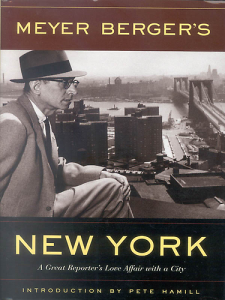
"He was as calm under questioning as he was during the twenty minutes that he was shooting men, women and children."
A furious ten hours of researching and writing about a 1949 mass murder in New Jersey won legendary New York Times reporter Meyer Berger the Pulitzer. An excerpt:
“CAMDEN, N.J., Sept.6–Howard B. Unruh, 28 years old, a mild, soft-spoken veteran of many armored artillery battles in Italy, France, Austria, Belgium and Germany, killed twelve persons with a war souvenir Luger pistol in his home block in East Camden this morning. He wounded four others.
Unruh, a slender, hollow-cheeked six-footer paradoxically devoted to scripture reading and to constant practice with firearms, had no previous history of mental illness but specialists indicated tonight that there was no doubt that he was a psychiatric case, and that he had secretly nursed a persecution complex for two years or more.
The veteran was shot in the left thigh by a local tavern keeper but he kept that fact secret, too, while policemen and Mitchell Cohen, Camden County prosecutor, questioned him at police headquarters for more than two hours immediately after tear gas bombs had forced him out of his bedroom to surrender.
Blood Betrays His Wound
The blood stain he left on the seat he occupied during the questioning betrayed his wound. When it was discovered he was taken to Cooper Hospital in Camden, a prisoner charged with murder.
He was as calm under questioning as he was during the twenty minutes that he was shooting men, women and children. Only occasionally excessive brightness of his dark eyes indicated that he was anything other than normal.
He told the prosecutor that he had been building up resentment against neighbors and neighborhood shopkeepers for a long time. ‘They have been
making derogatory remarks about my character,’ he said. His resentment seemed most strongly concentrated against Mr. and Mrs. Maurice Cohen who
lived next door to him. They are among the dead.”
Read the whole article.


